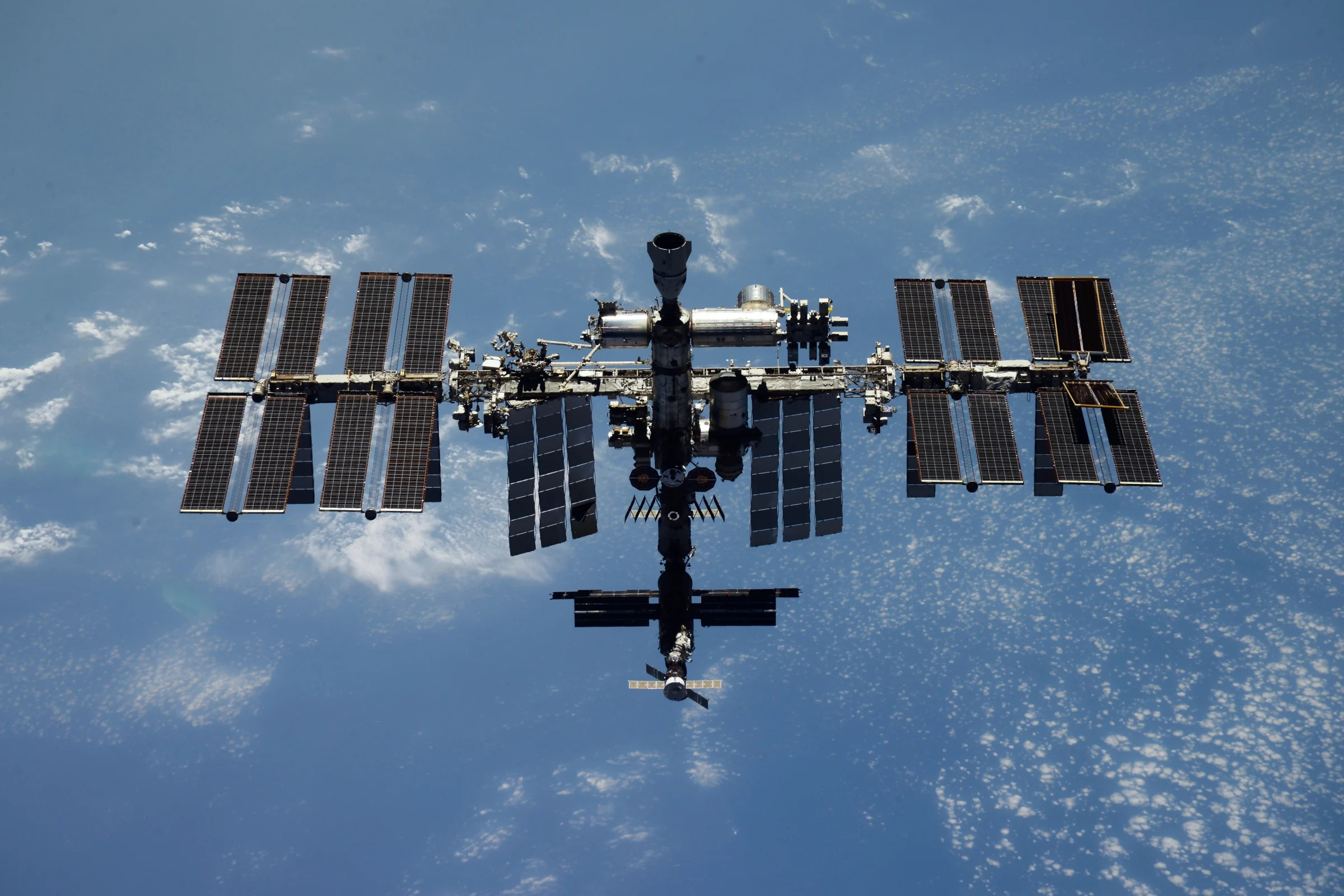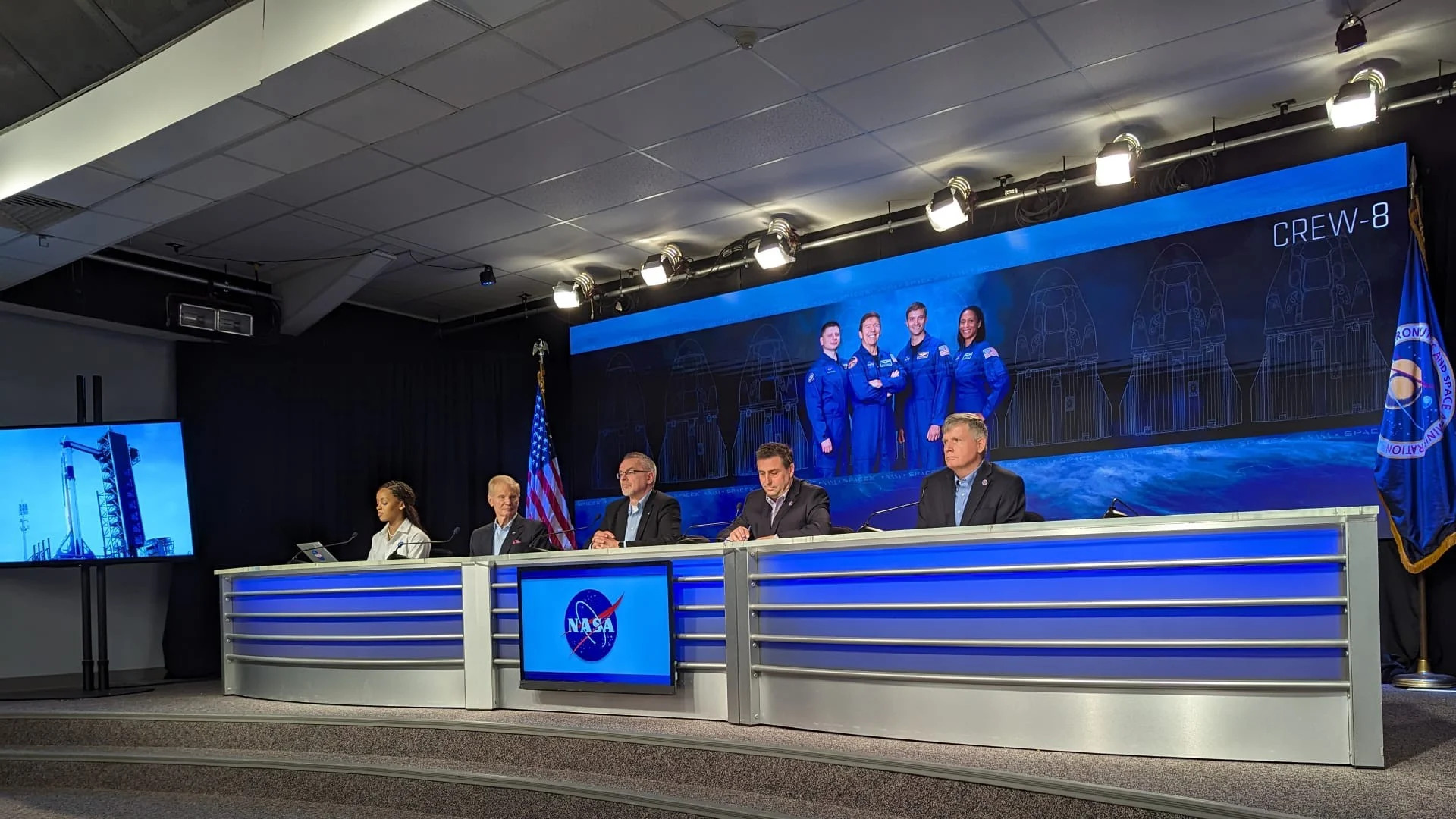Russian space officials on Wednesday acknowledged a continuing air leak from the Russian segment of the International Space Station, but said it poses no danger to its crew.
This undated photo released by the Roscosmos State Space Corporation shows the International Space Station (ISS). Russia's Roscosmos state corporation on Wednesday reported an air leak in the Russian segment of the International Space Station, but said it posed no threat to its crew.
The Roscosmos state corporation said that specialists were monitoring the leak and the crew “regularly conducts work to locate and fix possible spots of the leak."
“There is no threat to the crew or the station itself,” it said in a statement carried by Russian news agencies.
Roscosmos' statement followed comments by Joel Montalbano, NASA's station project manager, who noted Wednesday that the leak in the Russian segment has increased but emphasized that it remains small and poses no threat to the crew's safety or vehicle operations.
As the space outpost is aging, the crew has to spend more time to repair and maintain it, Roscosmos said..
Russian space officials first reported a leak in the Zvezda module in August 2020 and later that year Russian crew members located what they believed was its source and tried to fix it. In November 2021, another potentially leaky spot was found in a different part of the Russian section of the station.
Both Roscosmos and NASA have said the leak posed no danger to the crew and didn't impact operations on the station.
There have been other glitches too.
In October, coolant leaked from an external backup radiator for Russia’s new science lab Nauka (Science), although its main thermal control system was working normally and space officials said the crew and the station weren't in danger.
That incident followed coolant leaks from Russian spacecraft parked at the station.
In December 2022, coolant leaked from a Soyuz crew capsule docked to the station, and another similar leak from a Progress supply ship was discovered in February 2023. A Russian investigation concluded that those leaks likely resulted from hits by tiny meteoroids, not manufacturing flaws.
The space station, which has served as a symbol of post-Cold War international cooperation, is now one of the last remaining areas of cooperation between Russia and the West amid the tensions over Moscow’s military action in Ukraine. NASA and its partners hope to continue operating the orbiting outpost until 2030.
The station's current crew consists of NASA astronauts Jasmin Moghbeli and Loral O’Hara, the European Space Agency’s Andreas Mogensen, Russian cosmonauts Konstantin Borisov, Oleg Kononenko and Nikolai Chub and Japanese astronaut Satoshi Furukawa.
SpaceX Crew-8 astronauts eager for launch to ISS on March 1: 'Things surprise you, but we're ready'
Four astronauts with white spacesuits and helmets giving a thumbs up while standing in a row.
A new set of astronauts are ready for an International Space Station launch.
SpaceX is set to launch four new astronauts on the Crew Dragon spacecraft for Crew-8, the eighth operational commercial crew mission for NASA, to the International Space Station no earlier than Mar. 1.
Crew-8 includes NASA astronauts Matthew Dominick (commander), Michael Barratt (pilot), and Jeanette Epps (mission specialist), along with mission specialist Alexander Grebenkin, of the Russian space agency Roscosmos.
All of the crew are rookies aside from Barratt, who is on his third trip following flights in 2009 (ISS Expeditions 19-20) and 2011 (the space shuttle's STS-133). Epps was previously assigned to two other missions on Russia's Soyuz and Boeing's Starliner spacecraft, but was reassigned from both for various reasons.
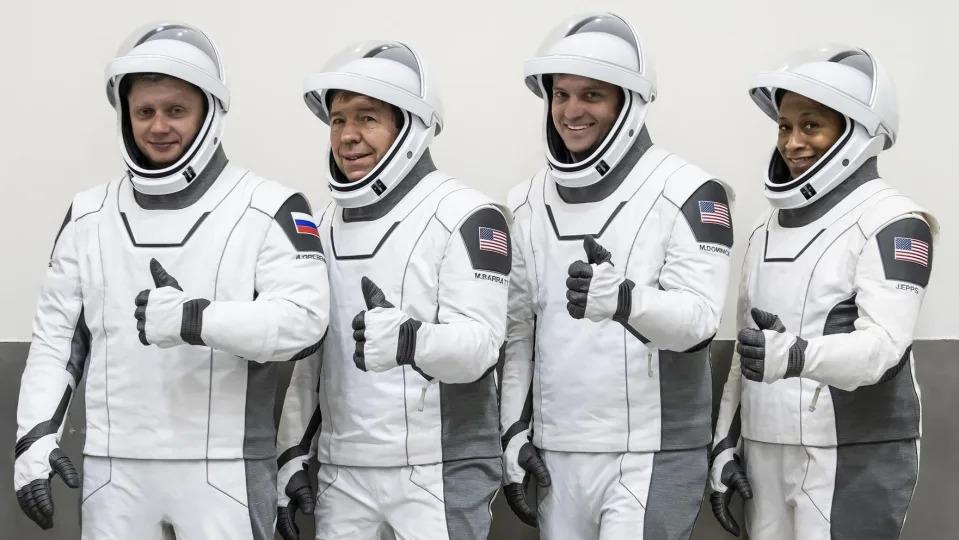
The crew's personal mementos are, as often the case in these missions, callbacks to meaningful moments and people in their lives. The four shared their plans to carry a few small things during a livestreamed Crew-8 press conference at NASA's Johnson Space Center in Houston, on Jan. 25.
Dominick plans to loft a watch that he said is similar to what the astronauts wore during Apollo moon missions (the astronauts used Omega Speedmasters). This watch is one he received from his father, who has held it since 1970. The two used to time their road trip distances between mile markers using that watch, he shared.
Among Barratt's mementos will be "hardcore photos" (printed out photos) of his family, while Epps will bring up a photo of her mother. "Five days after I was selected (as an astronaut candidate), my mom passed away," added Epps, who joined NASA in June 2009. "I wouldn't be here if it wasn't for her, and her work ethic and her emphasis on education growing up."
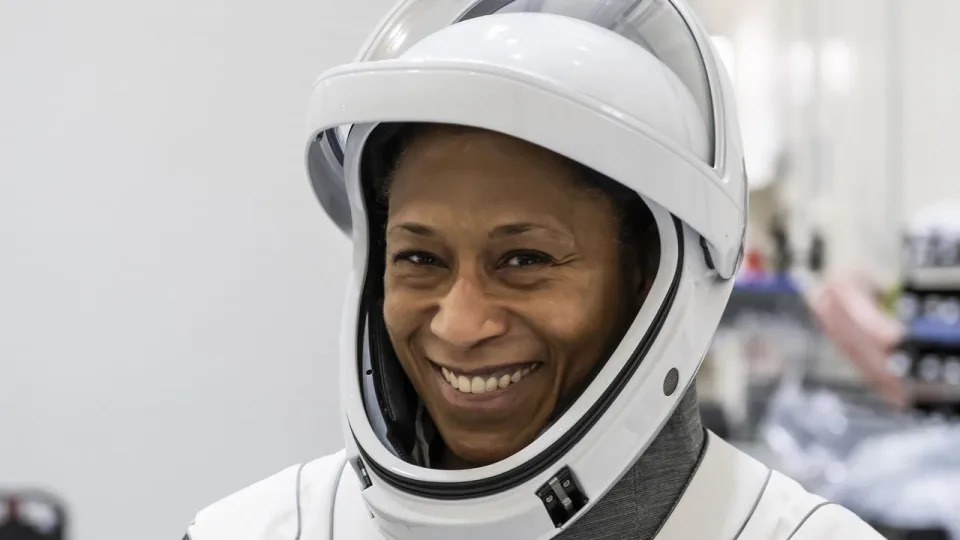
Space.com spoke with three of the four astronauts individually on Jan. 25 to learn more about their spaceflight or spaceflight-related experiences. (Epps was unavailable.)
One of Barratt's most "attention-getting events of my life" happened during STS-133 in February 2011, he shared, when Canadarm2 froze in place while spacewalking NASA astronaut Stephen Bowen was mounted on the robotic arm. "I'm fine as long as it's not too much longer," Bowen told the space shuttle crew. Barratt was one of the group controlling the arm from a workstation inside the Cupola — a 360-degree set of windows allowing for ideal views of robotic activities.
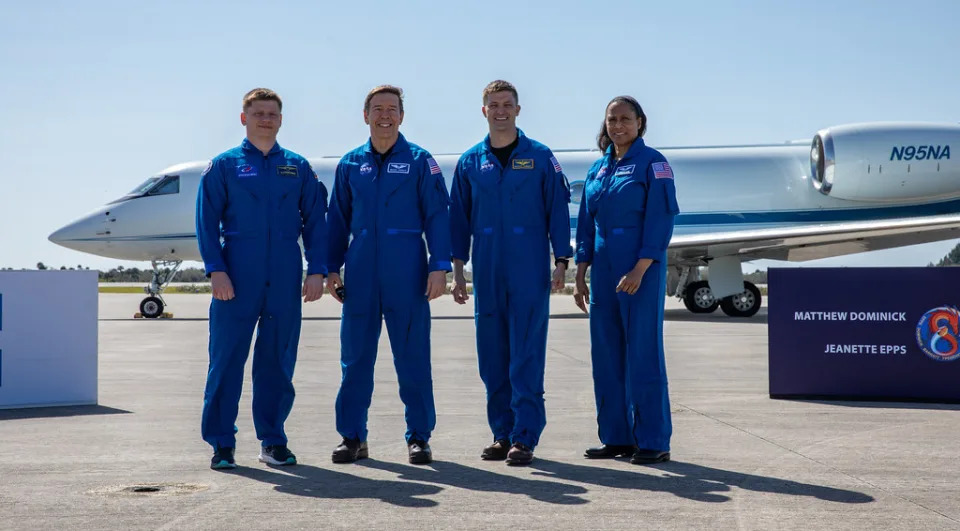
The cupola controls for Canadarm2 were not working, according to the NASA spacewalk history book "Walking to Olympus." But switching to a backup Canadarm2 station in the U.S. Destiny laboratory quickly solved the issue. Although the science hub was tucked further inside the ISS and away from the big windows, Barratt said this scenario showed that backups are always useful. "Things surprise you, but we're ready for those surprises for the most part," he said.
While Dominick has yet to fly to space, the Navy pilot is well-known around the Astronaut Office for organizing astronauts to buzz the Artemis 1 rocket in 2022, before that mission flew a human-rated capsule with mannequins around the moon. Artemis 1 was the debut moon mission of the greater Artemis program that aims to put humans on the moon again no earlier than 2026.
The resulting pictures of the astronaut group in T-38 trainers beside Artemis 1's Space Launch System rocket "are all over the Kennedy Space Center and Johnson Space Center", Dominick shared in a small-group interview with Space.com on Jan. 25, although his training schedule did not allow him to take part personally. The photos were enhanced in true NASA planning fashion: Dominick and his team used software to figure out the right time to fly for good lighting angles from the sun.
Grebenkin, a pilot for the Russian armed forces, said he is enjoying the challenge of learning the systems aboard the SpaceX Dragon capsule alongside his previous training with Soyuz.
When asked about key differences, he said through an English-language interpreter that it's not only about learning a new vehicle, but "getting accustomed a new training approach" with American instructors instead of Russian. While Grebenkin did not elaborate on the international differences, he added that most Russian training time for cosmonauts is devoted to learning how to operate the Soyuz spacecraft.
'It's white-knuckle time:' NASA chief stresses safety for Crew-8 astronaut launch
NASA leadership stressed safety above all else as the agency's Crew-8 mission to the International Space Station (ISS) prepares for launch.
Crew-8 will send three NASA astronauts and one Roscosmos cosmonaut to the ISS atop a SpaceX Falcon 9 rocket. Liftoff is currently scheduled for Friday (March 1) at 12:04 a.m. EST (0504 GMT). You can watch it live here at Space.com when the time comes.
In a press briefing at Kennedy Space Center here today (Feb. 28), NASA Administrator Bill Nelson underscored that the agency's first priority remains safety, no matter how routine commercial launches with SpaceX may appear to the public.
"Every time we launch, it's white-knuckle time — and especially when humans are on top," Nelson told reporters during the briefing. "We never want to get in to the frame of mind that it's so routine that it's like getting in your car and taking a Sunday afternoon drive."
Nelson said that the routine "frame of mind" contributed to the space shuttle Challenger disaster in 1986, in which seven astronauts lost their lives.
Crew-8 will mark the fifth flight of the SpaceX Crew Dragon capsule Endeavour, making it the current "fleet leader," according to Steve Stich, manager of NASA's Commercial Crew Program.
During today's briefing, Stich elaborated on current discussions the program is having centered around possibly extending the number of flights for which Crew Dragon is rated from five to 15, stating that SpaceX will examine Endeavour component by component after its Crew-8 flight to help teams make that determination.
As part of the focus on safety for Crew-8, mission managers are watching a few different weather systems off the Florida coast that could force a launch delay from the current schedule.
Stich described the current weather outlook as "marginal," and added that mission teams will continue to evaluate the weather forecast up until launch time.
NASA, SpaceX’s Crew-8: Meet the astronauts who are headed to space



